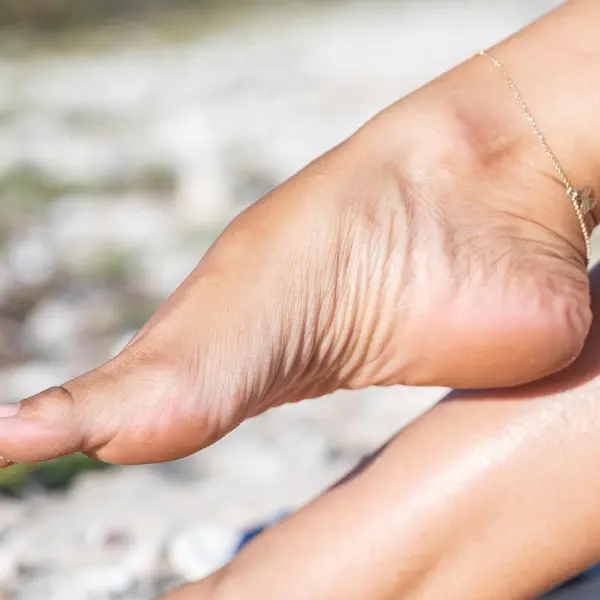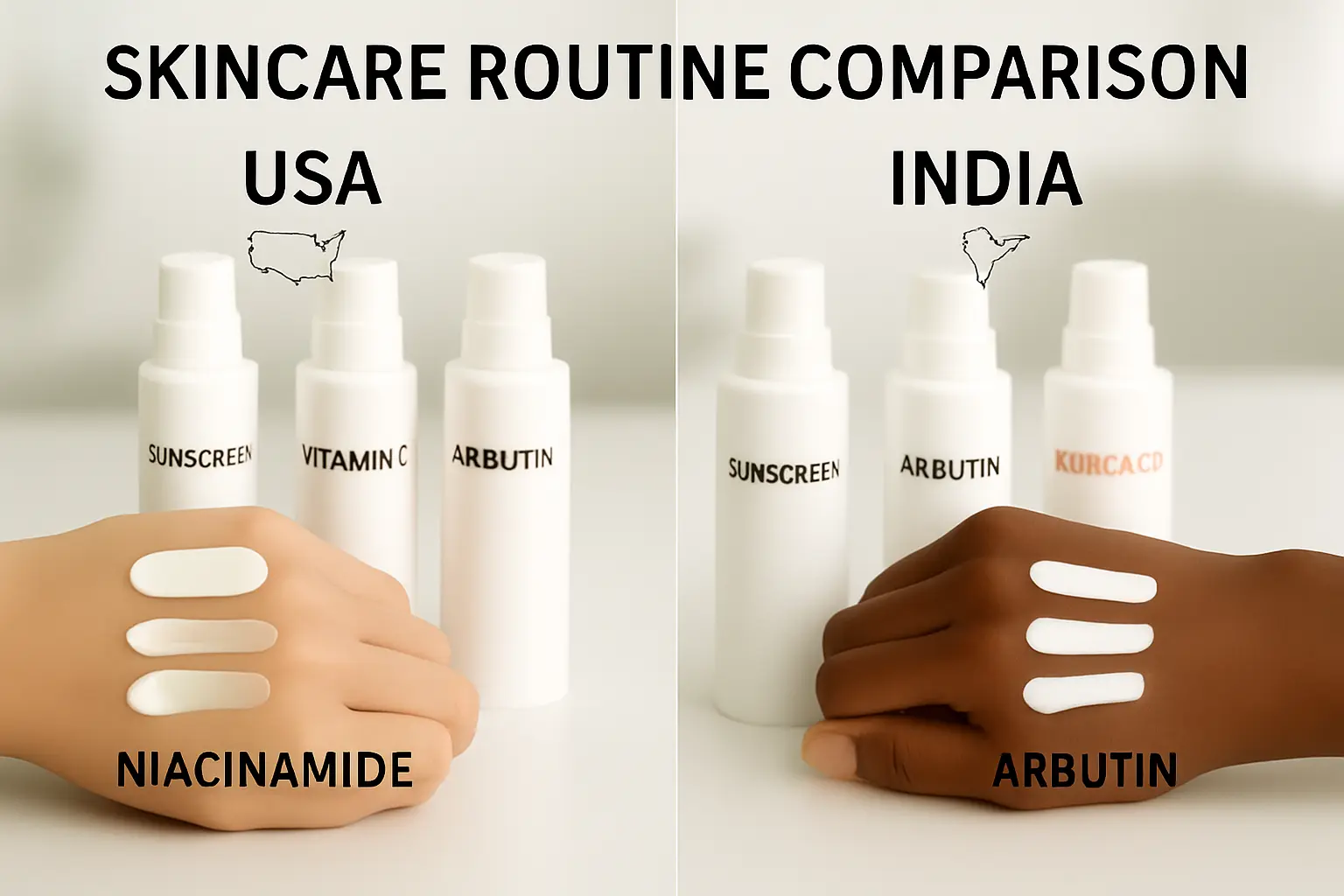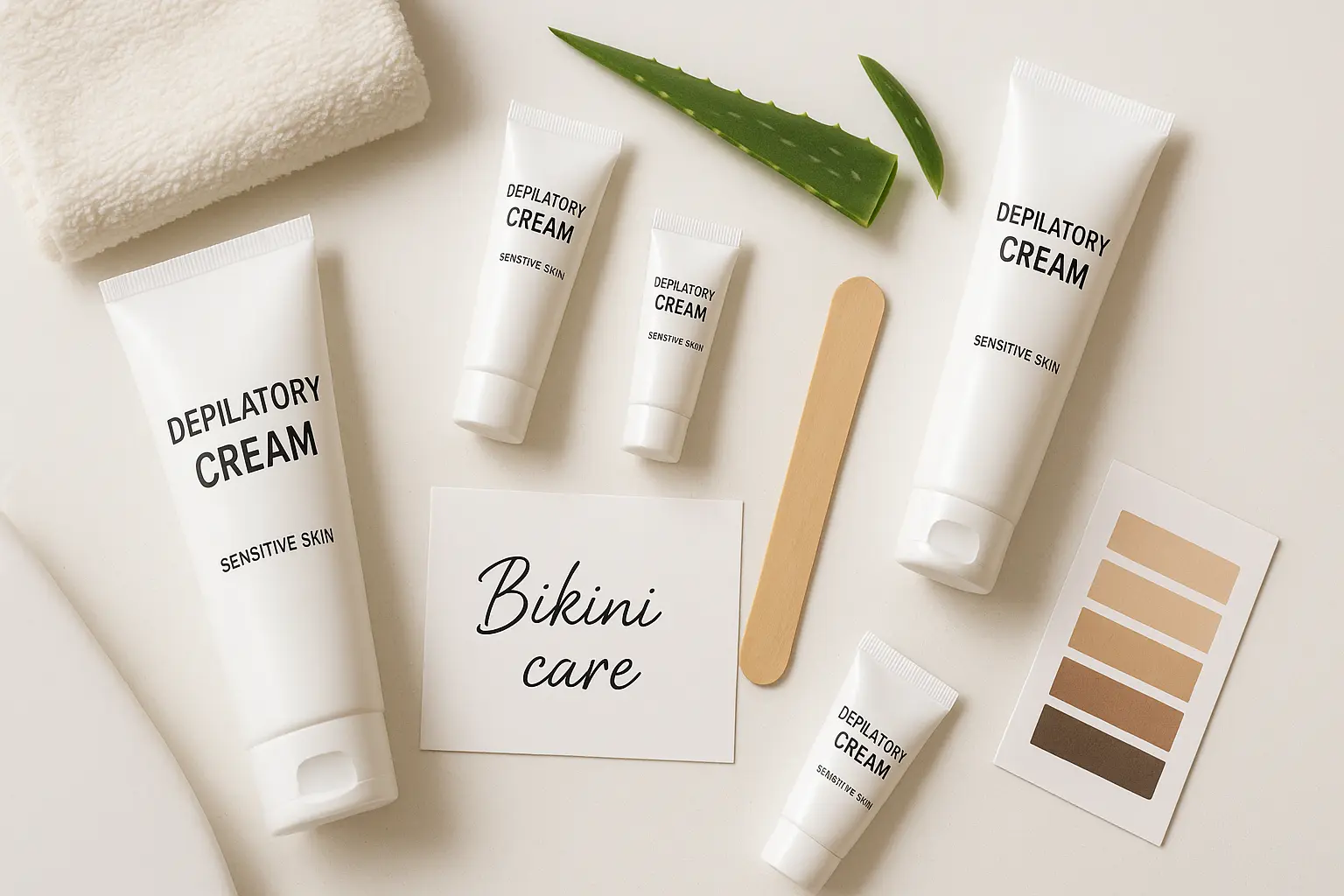Table of Contents
I. Home Remedies for Cracked Heels: A Comprehensive Guide
Introduction
Home remedies for cracked heels offer a natural and cost-effective solution to a common yet uncomfortable foot problem. Cracked heels, also known as heel fissures, can be both unsightly and painful, affecting millions of people worldwide. These cracks occur when the skin on the heels becomes dry, thick, and inflexible, leading to fissures that can range from minor cosmetic concerns to deep, painful cracks that may even bleed.
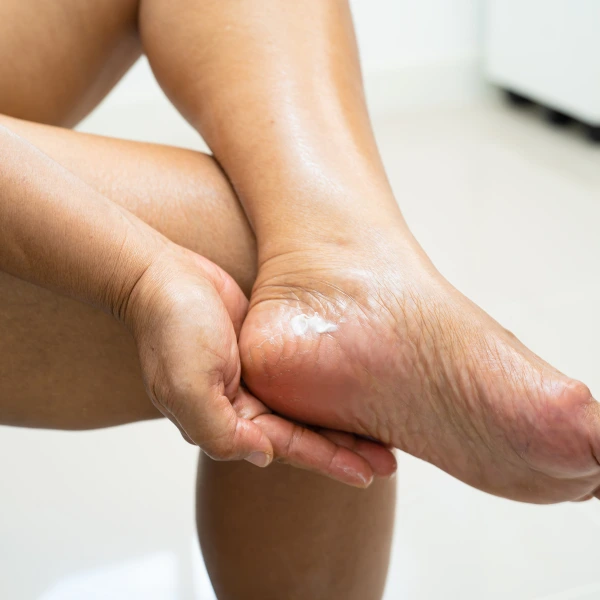
Cracked Heels Stock photos by Vecteezy
Addressing cracked heels is crucial not only for aesthetic reasons but also for maintaining overall foot health. Left untreated, these fissures can deepen, causing pain while walking and potentially leading to infections. Fortunately, there are numerous home remedies for cracked heels that can help soothe, heal, and prevent this condition.
In this comprehensive guide, we’ll explore ten powerful, soothing solutions that you can easily implement at home to achieve silky-smooth feet. These remedies utilize natural ingredients that are often readily available in your kitchen or local grocery store. By incorporating these treatments into your foot care routine, you can say goodbye to rough, cracked heels and hello to soft, supple skin.
II. Understanding Cracked Heels
Before diving into the home remedies for cracked heels, it’s essential to understand the causes, risk factors, and symptoms associated with this condition. This knowledge will help you better address the issue and prevent future occurrences.
Causes:
1. Lack of moisture: The primary cause of cracked heels is insufficient hydration in the skin. When the skin becomes too dry, it loses its elasticity and is more prone to cracking.
2. Pressure and friction: Standing for long periods or wearing open-backed shoes can increase pressure on the heels, leading to calluses and eventual cracking.
3. Hot showers and harsh soaps: Excessive exposure to hot water and the use of harsh, drying soaps can strip the skin of its natural oils, contributing to dryness and cracking.
4. Weather conditions: Cold weather and low humidity can exacerbate dry skin, making heels more susceptible to cracking.
5. Improper foot care: Neglecting to moisturize and exfoliate regularly can lead to the buildup of dead skin cells, increasing the likelihood of cracks.
Risk Factors:
Several factors can increase your risk of developing cracked heels:
1. Age: As we age, our skin produces less natural oil, making it more prone to dryness and cracking.
2. Obesity: Excess weight puts additional pressure on the heels, potentially leading to cracking.
3. Medical conditions: Certain health issues like diabetes, thyroid problems, and psoriasis, can increase the risk of developing cracked heels.
4. Nutritional deficiencies: Lack of essential vitamins and minerals, particularly vitamin E and zinc, can contribute to dry, cracked skin.
5. Prolonged standing: Jobs or activities that require long periods of standing can increase pressure on the heels.
Symptoms:
Recognizing the symptoms of cracked heels is crucial for early intervention and effective treatment. Common signs include:
1. Dry, rough skin on the heels
2. Visible cracks or fissures in the skin
3. Thickened, callused skin around the heel
4. Flaky or peeling skin
5. Redness or inflammation
6. Pain or discomfort while walking or standing
7. In severe cases, bleeding or infection in the cracks
Understanding these aspects of cracked heels provides a solid foundation for implementing effective home remedies. By addressing the root causes and being aware of your risk factors, you can tailor your approach to healing and preventing cracked heels more effectively. In the following sections, we’ll explore ten powerful home remedies for cracked heels that can help you achieve the smooth, healthy feet you desire.
III. 10 Powerful Home Remedies for Cracked Heels
A. Coconut Oil Overnight Treatment

Coconut Oil Stock photos by Vecteezy
One of the most effective home remedies for cracked heels is the coconut oil overnight treatment. This natural moisturizer is rich in medium-chain fatty acids that penetrate deep into the skin, providing intense hydration. To use this remedy, start by cleaning your feet thoroughly and patting them dry. Apply a generous amount of warm coconut oil to your heels, massaging it gently into the skin. Put on a pair of clean cotton socks to lock in the moisture and prevent staining your bedsheets. Leave the treatment on overnight and rinse off in the morning. For best results, repeat this process daily until your heels are smooth and crack-free.
B. Honey and Glycerin Foot Mask
Another powerful option among home remedies for cracked heels is the honey and glycerin foot mask. This combination creates a potent moisturizing treatment that can help heal and soften rough, cracked skin.
Mix equal parts raw honey and glycerin in a small bowl. Clean your feet and gently exfoliate the heels with a pumice stone. Apply the honey-glycerin mixture to your heels, covering them completely. Wrap your feet in plastic wrap and put on a pair of socks. Leave the mask on for 2-3 hours or overnight for maximum benefit. Rinse off with warm water and pat dry. The antibacterial properties of honey, combined with the humectant qualities of glycerin, make this an excellent remedy for healing and preventing cracked heels.
C. Banana and Avocado Foot Pack
For those seeking natural home remedies for cracked heels, the banana and avocado foot pack is an excellent choice. Mash one ripe banana and half an avocado together to create a smooth paste. Both ingredients are rich in vitamins and fatty acids that nourish and soften the skin. Apply this mixture generously to your clean, dry heels and cover with plastic wrap. Leave the pack on for 20–30 minutes before rinsing off with lukewarm water. The enzymes in banana help exfoliate dead skin cells, while the healthy fats in avocado provide deep moisturization. Use this remedy 2-3 times a week for noticeably softer, smoother heels.
D. Epsom Salt Foot Soak
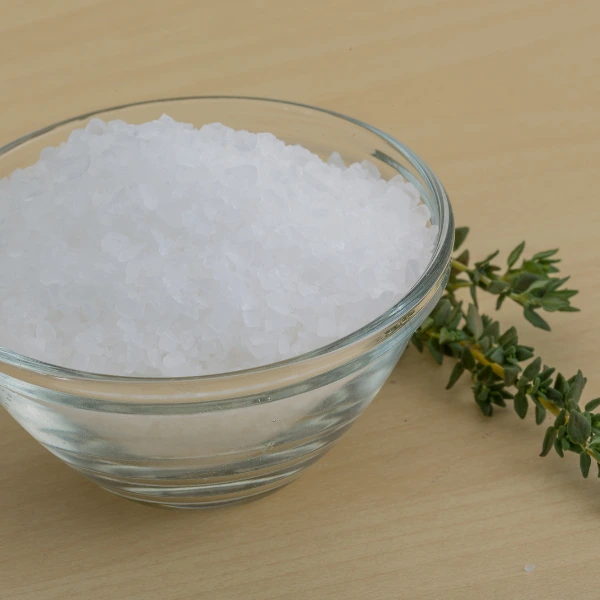
Epsom Salt Stock photos by Vecteezy
Among the various home remedies for cracked heels, an Epsom salt foot soak stands out for its simplicity and effectiveness. Dissolve 1/2 cup of Epsom salt in a basin of warm water. Soak your feet for 15-20 minutes, allowing the magnesium sulfate in the salt to soften the skin and reduce inflammation. After soaking, gently scrub your heels with a pumice stone to remove dead skin. Rinse your feet and pat them dry before applying a thick moisturizer. This soak not only helps heal cracked heels but also provides relaxation and relieves foot pain. For best results, incorporate this remedy into your foot care routine 2-3 times a week.
E. Lemon Juice and Vaseline Exfoliation
When it comes to home remedies for cracked heels, the combination of lemon juice and Vaseline offers both exfoliation and intense moisturization. Mix 1 tablespoon of lemon juice with enough Vaseline to create a paste. The citric acid in lemon juice acts as a natural exfoliant, while Vaseline provides a protective barrier to lock in moisture. Apply this mixture to your heels and cover with socks. Leave it on for at least an hour or overnight. Rinse off and gently scrub your heels with a pumice stone. The lemon juice helps remove dead skin cells, while the Vaseline deeply moisturizes, leaving your heels soft and smooth.
F. Oatmeal and Olive Oil Scrub
For those looking for gentle yet effective home remedies for cracked heels, an oatmeal and olive oil scrub is an excellent option. Mix 1/4 cup of ground oatmeal with 2 tablespoons of olive oil to create a paste. The oatmeal acts as a mild exfoliant, while olive oil provides deep hydration. After soaking your feet in warm water for 15 minutes, apply the scrub to your heels, gently massaging in circular motions. Leave it on for 5-10 minutes before rinsing off with warm water. This natural scrub not only helps remove dead skin but also soothes and moisturizes, making it an ideal treatment for sensitive or irritated skin.
G. Aloe Vera Gel Therapy
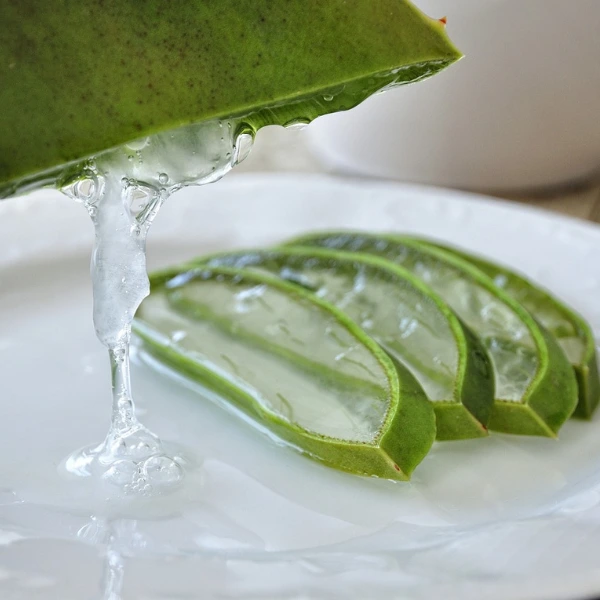
Aloe vera gel therapy is one of the most soothing home remedies for cracked heels. Known for its healing and moisturizing properties, aloe vera can help repair damaged skin and reduce inflammation. Extract fresh aloe vera gel from a leaf or use a pure, store-bought version. Apply a thick layer of the gel to your clean, dry heels and massage it in gently. Leave it on for 15-20 minutes before rinsing off with cool water. For an intensive treatment, apply the gel before bed and wear socks overnight. The natural enzymes and vitamins in aloe vera promote skin regeneration, helping to heal cracks and restore smoothness to your heels.
H. Shea Butter and Essential Oil Blend
Among the luxurious home remedies for cracked heels, a shea butter and essential oil blend offers deep nourishment and aromatherapy benefits. Melt 2 tablespoons of shea butter and mix in 2-3 drops each of lavender and tea tree essential oils. Shea butter is rich in vitamins and fatty acids that deeply moisturize the skin, while lavender and tea tree oils provide antibacterial and healing properties. Apply this blend to your heels after bathing or before bed, massaging it in thoroughly. Wear socks to lock in the moisture. The combination of these ingredients not only heals cracked heels but also leaves your feet feeling pampered and smelling great.
I. Rice Flour and Apple Cider Vinegar Paste
For those seeking exfoliating home remedies for cracked heels, a rice flour and apple cider vinegar paste is highly effective. Mix 2 tablespoons of rice flour with 1 tablespoon of apple cider vinegar and enough honey to form a paste. Rice flour acts as a gentle exfoliant, while apple cider vinegar helps balance the skin’s pH and soften calluses. Apply this paste to your heels and let it sit for 10–15 minutes. Gently scrub in circular motions before rinsing off with warm water. This remedy not only removes dead skin but also helps prevent fungal infections, thanks to the antifungal properties of apple cider vinegar.
J. Paraffin Wax Treatment
One of the most indulgent home remedies for cracked heels is the paraffin wax treatment. Melt paraffin wax in a double boiler and add a few drops of coconut or olive oil for extra moisturizing benefits. Once the wax is melted and slightly cooled, carefully dip your clean, dry heels into the wax several times to create a thick layer. Cover your feet with plastic wrap and put on socks. Leave the treatment on for 30 minutes to an hour. As the wax cools, it opens up pores and allows the moisturizing oils to penetrate deeply. Peel off the wax once it’s hardened to reveal incredibly soft, smooth heels. This spa-like treatment is particularly effective for severely cracked heels.
IV. Additional Tips for Preventing and Managing Cracked Heels
While home remedies for cracked heels can be highly effective, prevention is always better than cure. Here are some additional tips to keep your heels smooth and crack-free:
1. Stay hydrated: Drink plenty of water to keep your skin moisturized from within.
2. Wear proper footwear: Choose shoes that support your feet and avoid open-back sandals.
3. Use a foot file regularly. Gently exfoliate your heels to prevent the buildup of dead skin.
4. Moisturize daily: Apply a rich foot cream or natural oil to your heels every night.
5. Protect your feet: Wear socks or slippers around the house to prevent dryness.
6. Maintain a healthy diet: Consume foods rich in vitamins A, C, and E to promote skin health.
7. Avoid hot showers: Use lukewarm water to prevent stripping natural oils from your skin.
8. Check for underlying conditions: Consult a doctor if cracked heels persist, as they may indicate a medical issue.
By incorporating these tips along with the home remedies for cracked heels mentioned earlier, you can maintain soft, healthy feet year-round. Remember, consistency is key when it comes to foot care.
V. When to Seek Professional Help
While home remedies for cracked heels are usually sufficient, there are instances when professional help is necessary. Consult a podiatrist or dermatologist if:
1. Your cracked heels are severely painful or bleeding.
2. You notice signs of infection, such as warmth, redness, or pus.
3. You have diabetes or poor circulation.
4. Home remedies don’t improve your condition after several weeks.
5. You experience recurring episodes of cracked heels despite proper care.
A healthcare professional can provide advanced treatments and rule out any underlying medical conditions contributing to your cracked heels.
VI. Conclusion
Home remedies for cracked heels offer a natural, cost-effective approach to achieving smooth, healthy feet. By incorporating these remedies into your regular foot care routine and following preventive measures, you can effectively manage and prevent cracked heels. Remember that consistency is key, and results may take time. If your condition persists or worsens, don’t hesitate to seek professional help. With proper care and attention, you can say goodbye to painful, unsightly cracked heels and hello to soft, beautiful feet that you’ll be proud to show off. Take the first step towards healthier heels today!
VII. FAQs (Frequently Asked Questions)
1. Q: How long does it take to heal cracked heels using home remedies?
A: The healing time varies depending on the severity of the cracks and consistency of treatment. Generally, you may see improvement within 1-2 weeks of regular application of home remedies for cracked heels.
2. Q: Can I use these home remedies if I have diabetes?
While many home remedies for cracked heels are safe, people with diabetes should consult their doctor before trying any new treatments, as they may be more prone to infections.
3. Q: How often should I exfoliate my heels?
A: Gentle exfoliation 1-2 times a week is usually sufficient. Over-exfoliating can irritate the skin and worsen cracked heels.
4. Q: Are there any side effects to using these home remedies?
A: Most home remedies for cracked heels are safe, but some people may experience allergic reactions. Always do a patch test before applying any new remedy to your skin.
5. Q: Can cracked heels be a sign of a more serious condition?
A: In some cases, yes. Persistently cracked heels can be a sign of conditions like psoriasis, eczema, or thyroid problems. Consult a doctor if the condition doesn’t improve with home treatment.
6. Q: Is it necessary to see a doctor for cracked heels?
A: Not always. Most cases of cracked heels can be treated at home. However, if you experience severe pain, bleeding, or signs of infection, seek medical attention.
7. Q: Can wearing socks to bed really help with cracked heels?
A: Yes, wearing socks after applying moisturizer or other home remedies for cracked heels can help lock in moisture and improve the effectiveness of the treatment.
8. Q: Are expensive foot creams better than home remedies for treating cracked heels?
A: Not necessarily. Many home remedies can be just as effective as expensive creams. The key is consistency in application and choosing remedies that work well for your skin.
9. Q: Can I prevent cracked heels from recurring?
A: Yes, by maintaining a good foot care routine, staying hydrated, wearing proper footwear, and regularly moisturizing your feet, you can significantly reduce the likelihood of cracked heels recurring.
10. Q: Are cracked heels more common in certain seasons?
Yes, cracked heels tend to be more common in dry, cold weather or hot summer months when feet are exposed to open shoes. However, they can occur at any time if proper foot care is neglected.

